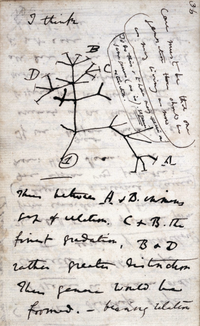
Photo from wikipedia
Public Goods Games (PGGs) are n-person games with dependence of individual fitness benefits on the collective investment by the players. We have studied a simple PGG scenario played out by… Click to show full abstract
Public Goods Games (PGGs) are n-person games with dependence of individual fitness benefits on the collective investment by the players. We have studied a simple PGG scenario played out by cooperating (C) and defecting (D) agents, applying the highly nonlinear threshold benefit function in an individual-based lattice model. A semi-analytical approximation of the lattice model has been developed and shown to describe the dynamics fairly well in the vicinity of the steady state. Besides the expected outcomes (i.e., the negative effect on cooperator persistence of higher cooperation costs and/or more intensive mixing of the population) we have found a surprising, counter-intuitive effect of the strength of selection on the steady state of the model. The effect is different at low and high cooperation costs, and it shows up only in the lattice model, suggesting that stochastic effects and higher order spatial correlations due to the emergent spatial clustering of cooperators (not taken into account in the semi-analytical approximation) must be responsible for the unexpected results for which we propose an intuitive explanation, present a tentative demonstration, and shortly discuss their biological relevance.
Journal Title: Journal of theoretical biology
Year Published: 2021
Link to full text (if available)
Share on Social Media: Sign Up to like & get
recommendations!